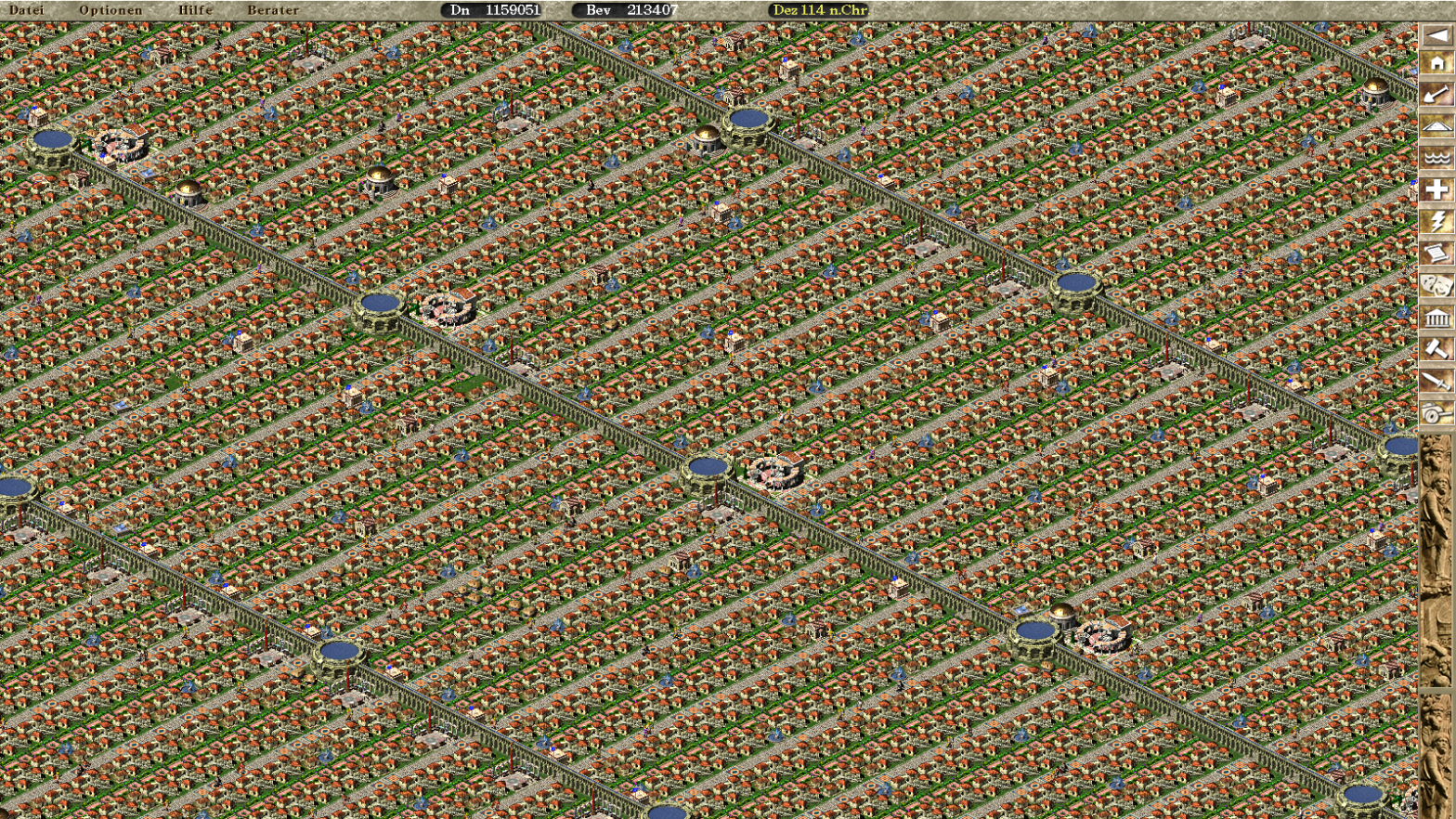Watching GamerZhak’s Caesar 3 content made me want to play some C3 myself again. For me, it’s one of the earliest PC games I played extensively. Dare I say, I know C3 pretty well. There is not much new stuff for me to learn from Zhak’s videos, but his playthroughs are fun to watch because of the way he messes up his games because of his playing style and his self-imposed challenges. Over and over, he has to fix his games and he does so successfully and skillfully while reflecting on what has gone wrong. He’s unafraid to make mistakes and that’s what makes his videos and streams so enjoyable.
What I did learn from him were 3 things: First to play the Julius and Augustus clones, secondly to setup special purpose maps and thirdly, the forced walker mechanics. Actually, GamerZhak implemented forced walkers to an extent where he effectively „broke the game“, so to speak. Understanding FW has made it highly inefficient not to use them, but at the same time, it’s an exploit, no doubt about that. Forced walkers are elegant and ugly at the same time, but in conjunction with the limit-removing Augustus executable, you can do things that weren’t possible before, e.g. cities with more than 200,000 population. For my 200k record attempt, I used Augustus 2.0. I’m not sure it still works in Augustus 3.0.
The most efficient way to house population is Small Casas. Small Casas need religion, fresh water, basic entertainment and basic education. Moreover, you need engineers, doctors, and tax collectors. That’s all! No food production and no markets if you activate „Rome provides wheat“ and – why not? No need for villas! And no prefectures – on a Northern map!
So I created a giant 160×160 map, Northern provinces, location Valencia for the trading options to make money. I afforded me the maximum initial and bail-out funds of 99,999dn and found later on, that I actually needed them because there is so much stuff to build:
| ~ 12.000 housing tiles | 120.000dn |
| > 3.000 gardens | 37.000dn |
| > 3.600 street tiles | 15.000dn |
| ~ 8.000 aqueduct tiles | 8.000dn |
| ~ 300 fountains | 4.500dn |
| ~ 50 reservoirs | 4.000dn |
| Sum | 188.500dn |
And as you can see, this tally doens’t include any buildings, production or otherwise, no scattered plazas to locally boost desirability, no reconstruction of roads or neighborhoods … those ~190k dn are just providing the barebone infrastructure to get the city running.
For the layout, I came up with long forced walker loops next to each other that stretched across the map. Along one edge, there is water. The aqueducts will run perpendicular to the loops to loose the least space for fresh water infrastructure. Close to the entry and exit points, there is some forest and some rocks for furniture and weapons production, which solely goes into export. A couple of Marble quarrys allowed for the construction of Oracles but god effects had to be turned of. It’s impossible to maintain enough religious buildings and meet the population requirement at the same time. The map simply doesn’t have enough space.
At the open end of each loop, there is a temple, a library, a theatre, an engineers post, and a clinic. All of them are bound to the forced walker loop. So just 14 tiles are needed to provide all neccessary services to about 1000 tiles of housing expected to hold around 17k of population. We will need 12 to 13 of such loops to achieve the population limit. Tax collectors do not follow forced loops, so forums have to be scattered about the map to give good coverage. The influx of immigrants is limited to 192 per month; that means this campaign takes about 80 in-game years to complete! These are really some extreme numbers and weird statistics for C3.
